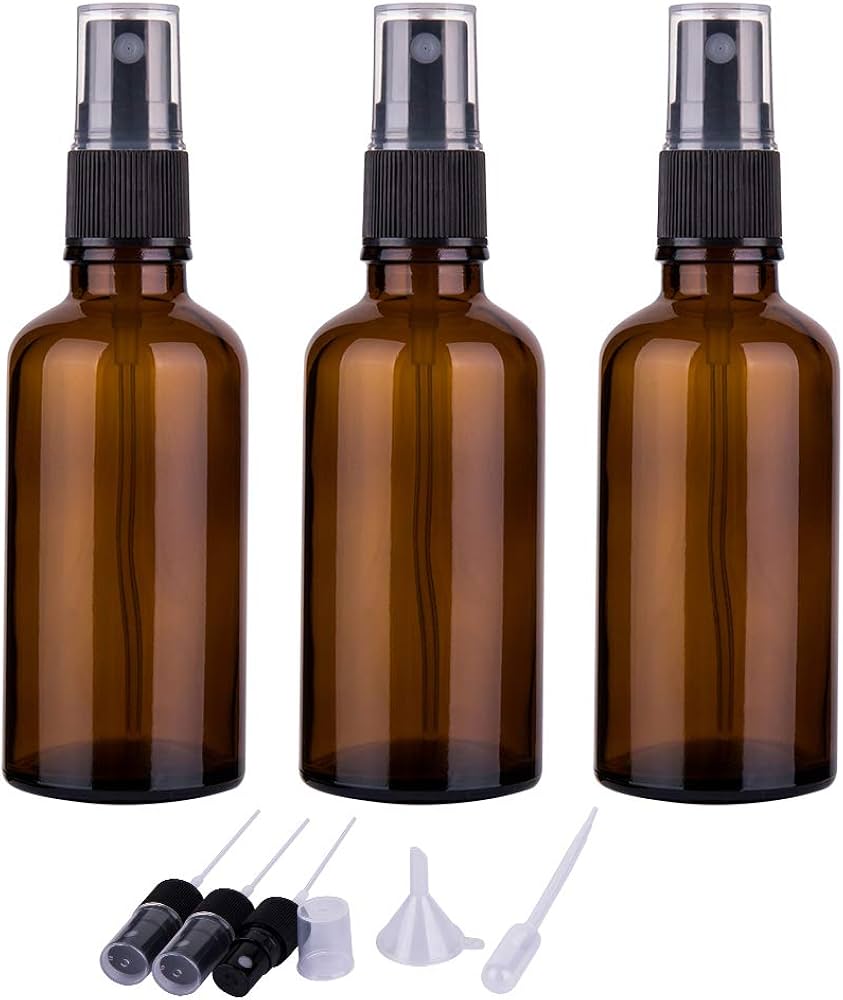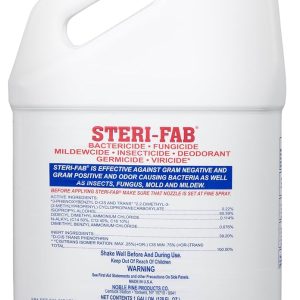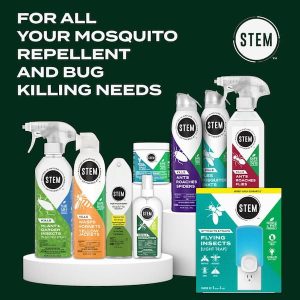
In today’s eco-conscious world, glass spray bottles have emerged as the sustainable alternative to plastic containers that every household needs. Whether you’re creating DIY cleaning solutions, storing essential oil blends, or organizing your beauty routine, a quality glass spray bottle offers unmatched durability, safety, and environmental benefits that plastic simply cannot provide.
The shift toward glass spray containers isn’t just a trend—it’s a necessary evolution in how we store and dispense liquids in our homes. Unlike their plastic counterparts, glass spray bottles don’t absorb odors, won’t degrade over time, and provide a crystal-clear view of contents. This comprehensive guide will explore everything you need to know about choosing, using, and maintaining glass spray bottles for maximum effectiveness and longevity.
What Makes Glass Spray Bottles Superior to Plastic Alternatives
The Science Behind Glass Superiority
Glass spray bottles offer distinct advantages rooted in the fundamental properties of glass as a material. Glass is chemically inert, meaning it doesn’t react with the liquids stored inside. This characteristic is crucial when dealing with acidic cleaning solutions, essential oils, or other potent mixtures that can cause plastic to break down over time.
The molecular structure of glass creates an impermeable barrier that prevents leaching of harmful chemicals into your stored liquids. Studies conducted by the Environmental Protection Agency have shown that plastic containers can release BPA, phthalates, and other endocrine disruptors, especially when exposed to heat or acidic substances. Glass spray bottles eliminate this concern entirely, providing a completely safe storage solution for all types of liquids.
Temperature resistance is another significant advantage of glass spray bottles. While plastic containers can warp, crack, or release toxic fumes when exposed to heat, borosilicate glass can withstand temperatures up to 500°F without structural damage. This makes glass spray containers ideal for storing hot solutions or placing in direct sunlight without degradation concerns.
Environmental Impact and Sustainability
The environmental benefits of choosing glass spray bottles over plastic alternatives are substantial and measurable. According to the Container Recycling Institute, glass is 100% recyclable and can be recycled infinitely without loss of quality or purity. In contrast, plastic bottles can only be recycled a limited number of times before the material degrades beyond usefulness.
Key Environmental Benefits:
- Infinite recyclability without quality loss
- No microplastic pollution in waterways
- Reduced carbon footprint over product lifetime
- Elimination of plastic waste in landfills
- No toxic chemical leaching into soil or water
A single glass spray bottle can replace dozens of plastic bottles throughout its lifetime. The average household uses approximately 15-20 spray bottles per year for various cleaning and personal care applications. By switching to reusable glass alternatives, a family of four can prevent over 60 plastic bottles from entering the waste stream annually.
Types of Glass Spray Bottles and Their Specific Applications
Amber Glass Spray Bottles
Amber glass spray bottles are the gold standard for protecting light-sensitive contents. The amber coloration filters out 99% of harmful UV rays, making these containers perfect for storing essential oils, homemade perfumes, and photosensitive cleaning solutions. The amber tint is created by adding sulfur, carbon, and iron oxide during the glass manufacturing process, creating a natural UV barrier.
Professional aromatherapists and cosmetic formulators exclusively use amber glass spray bottles for storing their most valuable preparations. Essential oils like citrus oils, which are particularly susceptible to UV degradation, can maintain their potency for months longer when stored in amber glass compared to clear containers.
Best Uses for Amber Glass Spray Bottles:
- Essential oil blends and aromatherapy sprays
- Homemade perfumes and colognes
- Natural skincare toners and serums
- Light-sensitive cleaning solutions
- Herbal tinctures and extracts
Clear Glass Spray Bottles
Clear glass spray bottles offer maximum visibility of contents, making them ideal for applications where you need to monitor liquid levels or observe color changes. These containers are perfect for everyday cleaning solutions, plant misters, and any application where UV protection isn’t a primary concern.
The transparency of clear glass allows for easy identification of contents and quick assessment of remaining volume. This feature is particularly valuable in commercial settings where multiple spray bottles containing different solutions are used simultaneously.
Frosted Glass Spray Bottles
Frosted glass spray bottles combine the durability of glass with an elegant, professional appearance. The frosted finish is created through acid etching or sandblasting, which creates a tactile surface that’s easier to grip when wet. These bottles are popular for high-end beauty products and professional salon applications.
The frosting process also provides some UV protection while maintaining a sophisticated aesthetic that appeals to consumers willing to pay premium prices for quality presentation.
Essential Features to Look for in Quality Glass Spray Bottles
Trigger Mechanism Quality and Durability
The trigger mechanism is often the weakest point in any spray bottle system, and this is especially true for glass spray bottles where the sprayer must be robust enough to handle the weight and rigidity of glass. High-quality triggers feature brass or stainless steel internal components that resist corrosion and maintain consistent performance over thousands of uses.
Premium Trigger Features to Seek:
- Adjustable spray pattern from fine mist to stream
- Corrosion-resistant internal mechanisms
- Comfortable ergonomic grip design
- Consistent spray volume and pressure
- Easy disassembly for cleaning and maintenance
The best glass spray bottles use triggers with replaceable parts, allowing you to maintain the bottle indefinitely by simply replacing worn components. This feature extends the useful life of your investment while maintaining peak performance.
Glass Thickness and Durability Specifications
Not all glass spray bottles are created equal when it comes to durability. The thickness of the glass walls directly impacts both the bottle’s resistance to impact and its ability to withstand pressure changes during use. Premium bottles typically feature walls that measure 2-3mm thick, providing excellent durability without excessive weight.
Borosilicate glass represents the highest quality option for glass spray bottles. This specialized glass contains boron trioxide, which gives it superior thermal shock resistance and overall strength compared to standard soda-lime glass. While borosilicate bottles cost more initially, their exceptional durability makes them cost-effective over time.
Capacity Options and Size Considerations
Glass spray bottles are available in a wide range of sizes to suit different applications and storage requirements. Understanding the optimal size for your specific needs helps maximize both convenience and cost-effectiveness.
Common Capacity Options:
| Size | Volume | Best Applications | Pros | Cons |
|---|---|---|---|---|
| 2 oz | 60ml | Travel, samples, testing | Portable, economical for trials | Frequent refilling needed |
| 4 oz | 120ml | Personal care, small batches | Good balance of size/portability | Limited volume for cleaning |
| 8 oz | 240ml | Home cleaning, plant care | Versatile, moderate weight | May be too small for large areas |
| 16 oz | 480ml | General cleaning, bulk mixing | Efficient for regular use | Heavier when full |
| 32 oz | 950ml | Commercial, heavy-duty cleaning | Maximum efficiency, fewer refills | Heavy, requires storage space |
The most popular size for household glass spray bottles is 16 oz, which provides an optimal balance between capacity and manageability. This size holds enough solution for most cleaning tasks while remaining comfortable to handle during extended use.
DIY Solutions Perfect for Glass Spray Bottles
All-Natural Cleaning Solutions
Glass spray bottles are ideal containers for homemade cleaning solutions because they won’t react with acidic or alkaline ingredients commonly found in natural cleaners. The chemical inertness of glass ensures that your carefully formulated solutions maintain their intended potency and effectiveness over time.
Multi-Surface Cleaner Recipe:
- 2 cups distilled water
- 1/2 cup white vinegar
- 1/4 cup rubbing alcohol (70% isopropyl)
- 1-2 drops dish soap (optional)
- 10-15 drops essential oil for fragrance
This versatile cleaner works effectively on glass, countertops, appliances, and most non-porous surfaces. The acidic nature of vinegar would gradually degrade plastic containers, but your glass spray bottle will maintain the solution’s integrity indefinitely.
Essential Oil-Based Formulations
Essential oils require special storage considerations due to their concentrated nature and tendency to break down plastic over time. Glass spray bottles, particularly amber varieties, provide the perfect environment for essential oil-based formulations while preserving their therapeutic properties.
Relaxing Room Spray:
- 4 oz distilled water
- 2 tablespoons witch hazel or vodka (as emulsifier)
- 20 drops lavender essential oil
- 10 drops chamomile essential oil
- 5 drops bergamot essential oil
The alcohol or witch hazel helps disperse the essential oils evenly throughout the water, creating a stable emulsion that won’t separate over time. Store this blend in an amber glass spray bottle to protect the oils from UV degradation.
Plant Care and Gardening Applications
Glass spray bottles excel in gardening applications where precise application and solution purity are important. Many plant care solutions contain nutrients or treatments that can react with plastic containers, potentially reducing their effectiveness or creating harmful byproducts.
Organic Pest Deterrent Spray:
- 2 cups water
- 2 tablespoons neem oil
- 1 tablespoon mild liquid soap
- 1 teaspoon garlic powder
This natural pest control solution is safe for edible plants and won’t harm beneficial insects when applied correctly. The oils in this mixture would eventually break down plastic containers, making a glass spray bottle essential for long-term storage and repeated use.
Proper Care and Maintenance of Glass Spray Bottles
Cleaning Protocols for Maximum Longevity
Maintaining your glass spray bottles properly ensures years of reliable service and prevents contamination between different solutions. The cleaning process varies depending on what solutions you’ve stored, but certain principles apply universally.
For general cleaning, start by completely emptying the bottle and trigger mechanism. Remove the trigger assembly and rinse all components with warm water. For stubborn residues, fill the bottle with a mixture of warm water and baking soda, allowing it to sit for several hours before scrubbing with a bottle brush.
Deep Cleaning Steps:
- Disassemble all removable parts completely
- Soak components in warm, soapy water for 30 minutes
- Scrub interior with bottle brush and baking soda paste
- Rinse thoroughly with distilled water
- Air dry all components completely before reassembly
For bottles that contained oils or sticky substances, use a degreasing solution of warm water and dish soap, followed by a rinse with white vinegar to eliminate any soap residue. The vinegar also helps remove hard water deposits that can affect the spray pattern.
Preventing Common Issues and Damage
Glass spray bottles are remarkably durable when handled properly, but understanding common failure points helps prevent premature damage. The most frequent issues involve the trigger mechanism rather than the glass itself, making proper trigger maintenance crucial for long-term success.
Calcium buildup from hard water is one of the most common problems affecting spray bottle performance. This buildup occurs gradually in the small passages of the trigger mechanism, eventually blocking the spray pattern or preventing operation entirely. Regular cleaning with white vinegar dissolves these deposits before they cause permanent damage.
Preventive Maintenance Schedule:
- Weekly: Rinse with clean water after use
- Monthly: Disassemble and deep clean all components
- Quarterly: Inspect for wear and replace worn parts
- Annually: Complete overhaul and part replacement as needed
Temperature shock represents another potential issue for glass spray bottles. While quality glass can handle significant temperature variations, rapid changes can cause stress fractures. Always allow bottles to reach room temperature before filling with hot solutions, and avoid placing cold bottles in direct sunlight.
Storage Best Practices
Proper storage extends the life of your glass spray bottles while maintaining solution quality. Store bottles in cool, dry locations away from direct sunlight, even when using amber glass. Temperature fluctuations can affect both the glass and the trigger mechanism’s plastic components.
When storing multiple glass spray bottles containing different solutions, implement a clear labeling system to prevent confusion and potential dangerous mixing. Use waterproof labels that won’t deteriorate when exposed to cleaning solutions or moisture.
Cost Analysis: Glass vs Plastic Spray Bottles
Initial Investment Comparison
The upfront cost of glass spray bottles is typically 3-5 times higher than comparable plastic alternatives, but this initial investment pays dividends over time through durability and reusability. A quality 16 oz glass spray bottle typically costs $8-15, while a similar plastic bottle costs $2-4.
Cost Breakdown Analysis:
| Factor | Glass Spray Bottle | Plastic Spray Bottle |
|---|---|---|
| Initial Cost | $8-15 | $2-4 |
| Expected Lifespan | 5-10+ years | 6-18 months |
| Replacement Frequency | Rarely needed | 3-6 times per year |
| Annual Cost | $1-3 | $4-12 |
| 5-Year Total Cost | $8-15 | $20-60 |
This analysis demonstrates that glass spray bottles become more economical after just 2-3 years of use, with savings increasing significantly over longer periods.
Long-term Value Proposition
The true value of glass spray bottles extends beyond simple cost calculations to include factors like solution effectiveness, health benefits, and environmental impact. Solutions stored in glass maintain their potency longer due to the absence of chemical interactions that occur with plastic containers.
Quantifiable Long-term Benefits:
- Solution potency retention saves 10-15% on replacement costs
- Elimination of replacement purchases after initial investment
- Reduced health risks from plastic chemical exposure
- Environmental impact reduction equivalent to 50+ plastic bottles per year
- Professional appearance enhances perceived value of homemade products
Professional cleaning services and high-end spas exclusively use glass spray bottles because they understand that the superior performance and presentation justify the higher initial cost. The same principles apply to home users who value quality and sustainability.
Safety Considerations and Best Practices
Chemical Compatibility Guidelines
While glass spray bottles are chemically inert and compatible with virtually all household solutions, certain safety considerations remain important for optimal performance and user safety. Understanding which solutions work best in glass containers helps maximize both effectiveness and safety.
Strong acids and bases are perfectly safe in glass spray bottles, unlike plastic containers where chemical reactions can create harmful byproducts or weaken the container structure. However, hydrofluoric acid is the notable exception—it etches glass and should never be stored in glass containers.
Safe Solution Categories for Glass:
- Acidic cleaners (vinegar, citric acid, lemon juice)
- Alkaline solutions (baking soda, ammonia-based cleaners)
- Alcohol-based formulations (rubbing alcohol, vodka tinctures)
- Essential oil blends (all concentrations and types)
- Water-based solutions (all pH levels and additives)
The trigger mechanism components may have different compatibility requirements than the glass container. Most quality triggers use materials that resist common household chemicals, but extremely concentrated solutions may require specialized trigger systems designed for harsh chemicals.
Handling and Transportation Guidelines
Glass spray bottles require more careful handling than plastic alternatives, but proper technique eliminates most risk of breakage. The key is understanding that glass fails differently than plastic—while plastic may crack or split gradually, glass typically fails suddenly when its stress limits are exceeded.
Always support the bottom of larger glass spray bottles when lifting, rather than holding only the trigger or neck area. This distributes the weight evenly and prevents stress concentration at connection points. When transporting multiple bottles, use padded containers or dividers to prevent contact between glass surfaces.
Safe Handling Techniques:
- Two-handed lifting for bottles over 16 oz capacity
- Bottom support for all lifting and carrying operations
- Secure storage with padding between multiple bottles
- Temperature awareness to prevent thermal shock
- Regular inspection for stress cracks or damage signs
Impact resistance varies significantly between different types of glass. Borosilicate glass offers superior impact resistance compared to standard soda-lime glass, making it worth the extra cost for applications where dropping is likely.
Environmental Impact and Sustainability Benefits
Lifecycle Assessment of Glass vs Plastic
The environmental advantages of glass spray bottles become apparent when examining the complete lifecycle from production through disposal. While glass production requires more energy initially, the ability to reuse glass containers indefinitely makes them far more sustainable over time.
Manufacturing one glass spray bottle generates approximately 0.5 kg of CO2 emissions, while a plastic bottle generates about 0.1 kg. However, the plastic bottle typically requires replacement 10-20 times during the lifespan of a single glass bottle, resulting in total emissions of 1-2 kg of CO2 for plastic versus 0.5 kg for glass.
Environmental Impact Comparison:
| Impact Category | Glass Spray Bottle | Plastic Spray Bottle (Lifetime) |
|---|---|---|
| CO2 Emissions | 0.5 kg | 1.5-2.0 kg |
| Landfill Waste | 0 kg (recyclable) | 0.5-1.0 kg |
| Ocean Plastic | 0 kg | 0.1-0.3 kg |
| Microplastic Generation | 0 particles | 1,000+ particles |
| Chemical Leaching | None | Ongoing throughout life |
The microplastic generation from plastic spray bottles represents a particularly concerning environmental impact. Each plastic bottle can generate thousands of microscopic particles that enter water systems and food chains, with consequences that scientists are still working to understand.
Circular Economy Integration
Glass spray bottles align perfectly with circular economy principles by eliminating waste through indefinite reuse and complete recyclability. Unlike plastic, which degrades with each recycling cycle, glass maintains its properties indefinitely, making it a truly circular material.
The circular economy model for glass spray bottles includes multiple lifecycle loops: primary use for original solutions, secondary use for different applications, potential artistic or decorative repurposing, and finally complete recycling into new glass products without quality loss.
Communities with robust glass recycling programs can achieve near-zero waste from glass spray bottles, with old bottles becoming raw material for new containers in an endless cycle. This closed-loop system represents the ideal sustainable product model that other materials strive to achieve.
Conclusion: Making the Switch to Glass Spray Bottles
The transition from plastic to glass spray bottles represents a significant upgrade in both functionality and sustainability for any household or business. While the initial investment is higher, the superior performance, indefinite lifespan, and environmental benefits make glass the clear choice for conscious consumers.
Glass spray bottles offer unmatched chemical compatibility, ensuring that your carefully formulated solutions maintain their potency and safety over time. The elimination of plastic-related health concerns, combined with the professional appearance and feel of glass, elevates every application from basic cleaning to premium beauty treatments.
The environmental impact of choosing glass spray bottles extends far beyond individual households. Each bottle represents a commitment to reducing plastic waste, eliminating microplastic pollution, and supporting sustainable manufacturing practices. When multiplied across millions of households, this choice contributes significantly to global environmental protection efforts.
Whether you’re creating natural cleaning solutions, storing essential oil blends, or maintaining plants, glass spray bottles provide the durability, safety, and sustainability that modern consumers demand. The investment in quality glass containers pays dividends through years of reliable service while contributing to a more sustainable future for everyone.
Make the switch to glass spray bottles today and experience the difference that quality materials make in both performance and peace of mind. Your health, your solutions, and the environment will all benefit from this simple but impactful upgrade to your household essentials.





